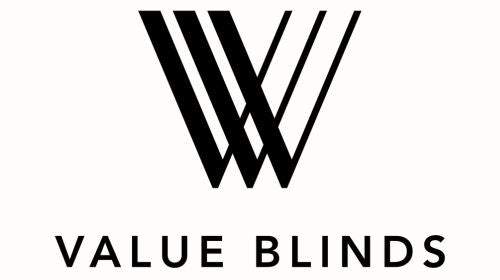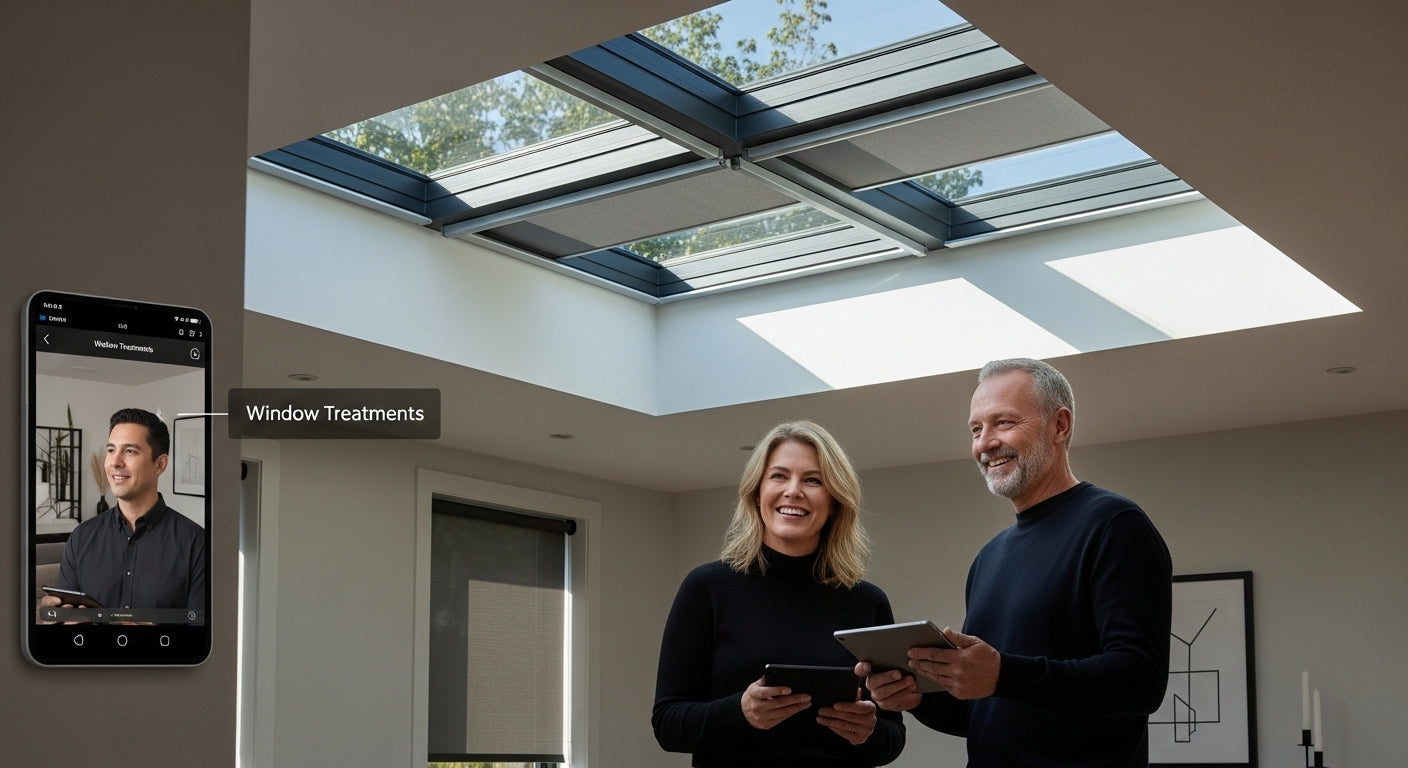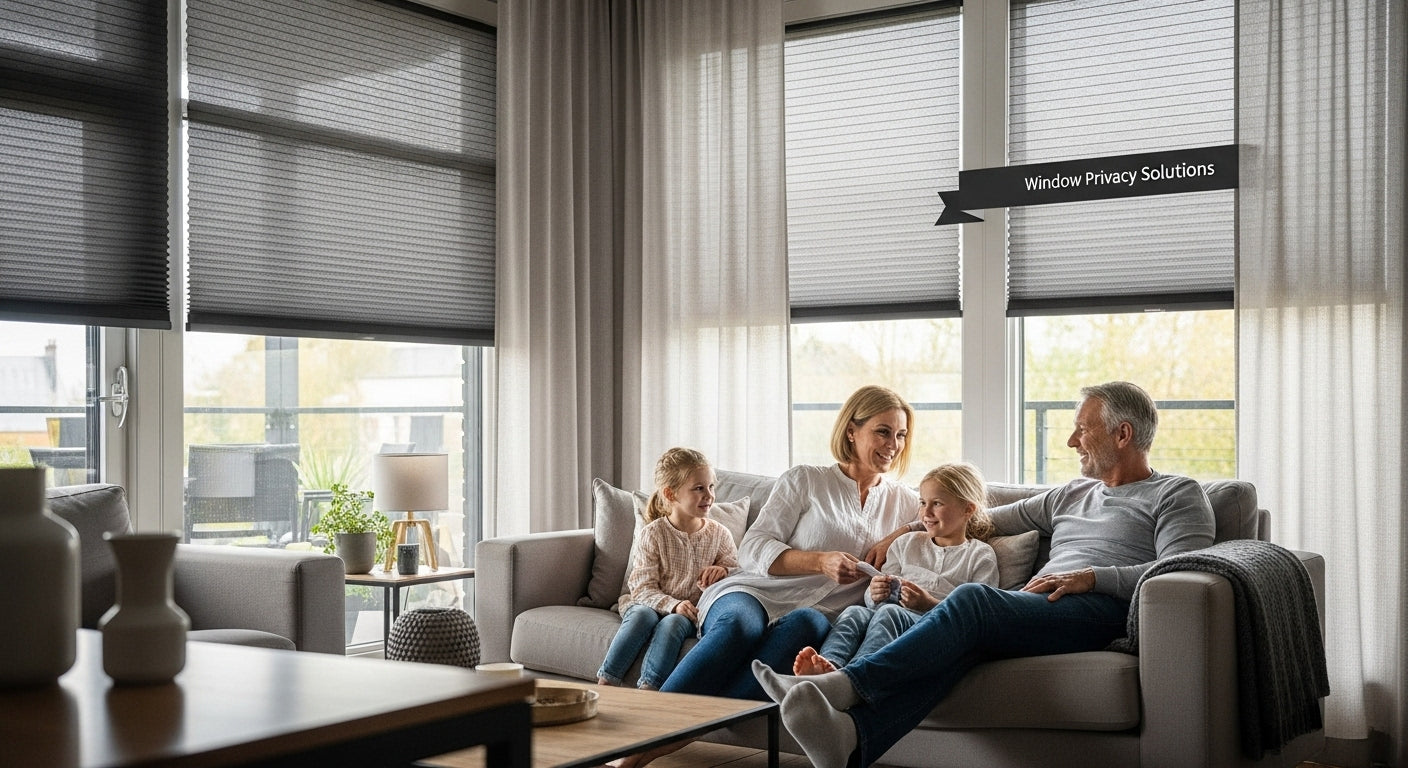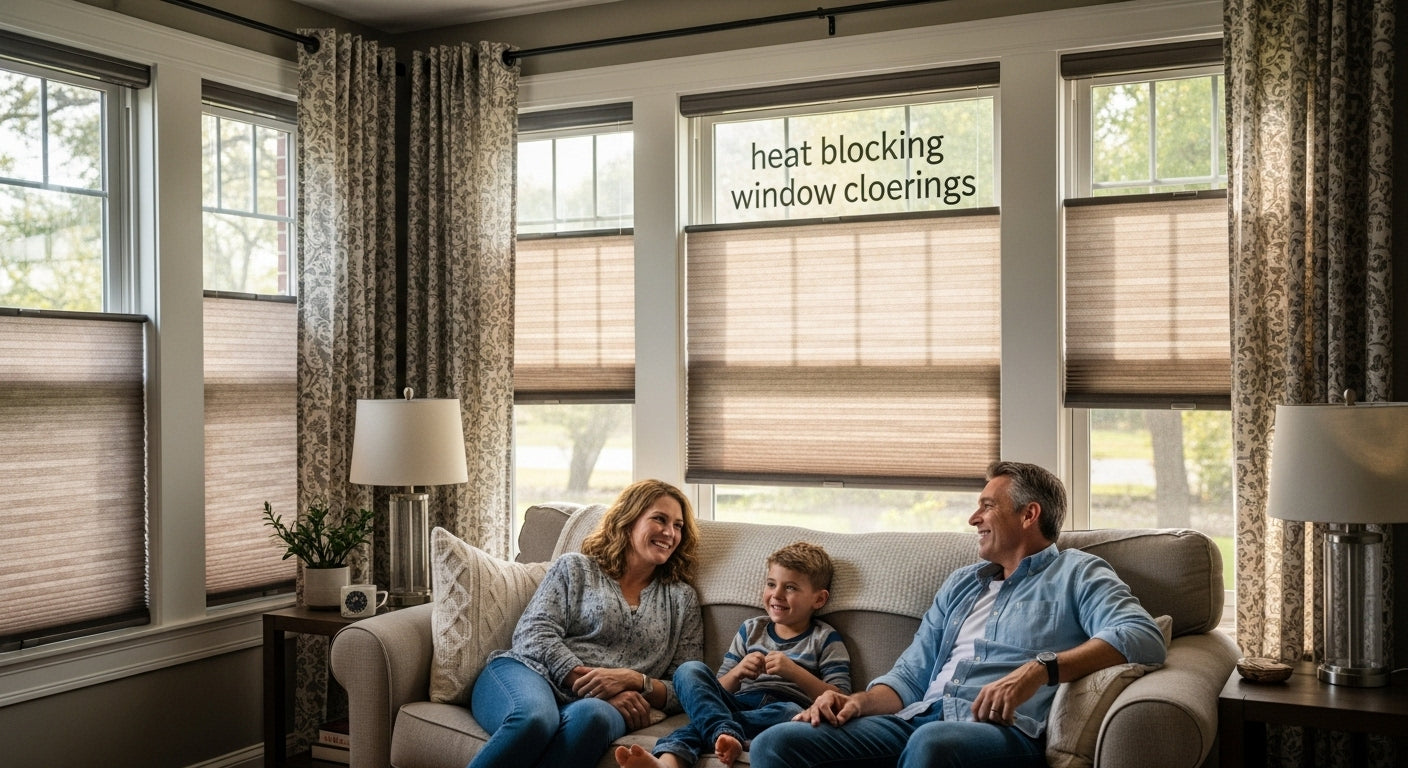
Understanding Heat Blocking Window Coverings for Home Comfort
Sunlight streaming through your windows might look inviting, but it is quietly driving up your energy bills. Some heat blocking window coverings can actually cut solar heat gain by as much as 77 percent, which can translate to slashed cooling costs. Most people focus on curtains for privacy or decoration, but picking the right window treatment could end up making your whole house feel cooler while saving a noticeable chunk of money.
Table of Contents
- What Are Heat Blocking Window Coverings?
- Why Heat Blocking Matters for Homeowners
- The Science Behind Heat Blocking Technology
- Types of Heat Blocking Window Coverings
- Real-World Benefits of Using Heat Blocking Window Treatments
Quick Summary
| Takeaway | Explanation |
|---|---|
| Heat blocking window coverings reduce solar heat gain. | These coverings can reject up to 70% of incoming solar heat, improving indoor comfort and reducing air conditioning costs. |
| Cellular shades are highly effective for energy savings. | They create thermal barriers, minimizing heat transfer and significantly enhancing energy efficiency in homes. |
| Proper window treatments lower energy expenses. | Strategic selection can reduce energy consumption by 10-25%, translating to lower utility bills and less HVAC usage. |
| Heat blocking enhances indoor comfort and sustainability. | By minimizing heat gain, these treatments create more consistent temperatures, improving living conditions and contributing to environmental conservation. |
| Advanced materials optimize thermal performance. | Innovative features like reflective coatings and phase-changing microparticles work together to effectively manage solar radiation. |
What Are Heat Blocking Window Coverings?
Heat blocking window coverings represent sophisticated solutions designed to manage solar heat gain and enhance home temperature regulation. These specialized window treatments go beyond traditional aesthetic purposes, serving as critical thermal barriers that protect interior spaces from excessive warmth and solar radiation.
The Science Behind Heat Blocking Technologies
At their core, heat blocking window coverings work through advanced materials and strategic design principles that interrupt solar energy transmission. Research from MIT demonstrates that innovative window technologies can reject up to 70% of incoming solar heat, potentially reducing air conditioning expenses significantly.
Key mechanisms of heat blocking include:
- Reflective surface coatings that bounce solar radiation away
- Specialized materials with high solar reflectance properties
- Cellular structures that create insulating air pockets
Types of Heat Blocking Window Treatments
Homeowners have multiple options for implementing heat blocking technologies. Cellular shades, also known as honeycomb shades, represent one of the most effective solutions. According to the U.S. Department of Energy, these window coverings can achieve substantial energy savings by creating thermal barriers that minimize heat transfer.
Other notable heat blocking window coverings include:
- Reflective roller shades
- Exterior solar screens
- Thermal drapes with specialized backing
- Metallic-coated window films
By strategically selecting and installing these heat blocking window coverings, homeowners can significantly improve indoor comfort while simultaneously reducing energy consumption.
To help homeowners evaluate options, the table below compares common types of heat blocking window coverings and the key features that differentiate them.
| Window Covering Type | Key Features | Energy Saving Potential | Notes |
|---|---|---|---|
| Cellular (Honeycomb) Shades | Insulating air pockets, multiple layers | High (significant reduction) | Superior thermal barrier |
| Reflective Roller Shades | Reflective surfaces to bounce solar radiation | Moderate to High | Best for sunny climates |
| Thermal Drapes/Curtains | Thick, multi-layered fabric with insulating liner | Moderate | Effective if closed during peak sun |
| Exterior Solar Screens | Mounted outside, blocks solar rays before entry | Moderate | Preserves outside view |
| Metallic-Coated Window Films | Reflects heat, easy retrofit for glass | Moderate | Maintains natural light, cost-effective |
Why Heat Blocking Matters for Homeowners
Heat blocking window coverings are not merely aesthetic choices but strategic investments in home comfort and energy efficiency. By understanding their significance, homeowners can transform their living spaces into more comfortable, cost-effective environments that maintain optimal temperature regulation.
Financial Benefits and Energy Savings
Implementing heat blocking window coverings represents a direct pathway to substantial financial advantages. Research from Energy Efficiency studies reveals that proper window treatments can dramatically reduce energy consumption, translating into meaningful cost savings for households.
Key financial advantages include:
- Reduced cooling expenses during summer months
- Decreased strain on HVAC systems
- Potential utility bill reductions of 10-25%
- Extended lifespan of home cooling equipment
Comfort and Environmental Impact
Beyond monetary considerations, heat blocking window coverings contribute significantly to indoor comfort and environmental sustainability. By minimizing solar heat gain, these treatments create more consistent interior temperatures, reducing hot spots and maintaining a more pleasant living environment.
Environmental benefits encompass:
- Lower carbon footprint through reduced energy consumption
- Minimized reliance on air conditioning systems
- Conservation of natural resources
- Support for sustainable home design principles
Homeowners can further enhance their understanding by exploring cellular shades insulation techniques, which offer advanced thermal management solutions that complement heat blocking strategies. By making informed choices about window treatments, individuals can simultaneously improve personal comfort, reduce energy expenses, and contribute to broader environmental conservation efforts.
The following table summarizes the practical benefits of heat blocking window coverings for homeowners, including both economic and environmental impacts.
| Benefit Category | Description | Example Outcome |
|---|---|---|
| Financial Savings | Lower energy bills and reduced cooling usage | Utility bills cut by 10-25% |
| Energy Efficiency | Minimizes solar heat gain, lowers HVAC workload | Less frequent AC use |
| Comfort | More consistent indoor temperatures | Fewer hot spots in living spaces |
| Environmental Impact | Decreases energy consumption and carbon footprint | Reduces reliance on fossil fuels |
| Equipment Longevity | Less wear on HVAC and cooling systems | Extended system lifespan |
The Science Behind Heat Blocking Technology
Heat blocking technology represents a sophisticated intersection of materials science, thermal physics, and engineering design. These advanced solutions transform how residential spaces manage solar radiation and temperature regulation through intelligent, strategic approaches.
Thermal Radiation Principles
Research from MIT reveals groundbreaking developments in heat management technologies. The fundamental principle underlying heat blocking involves interrupting solar energy transmission through specialized materials that reflect, absorb, or redirect infrared radiation.
Key thermal radiation mechanisms include:
- Selective wavelength reflection
- Infrared energy absorption
- Thermal gradient manipulation
- Molecular phase transition technologies
Material Science Innovations
Modern heat blocking window coverings leverage advanced material compositions designed to optimize thermal performance. These innovative materials function through complex interactions between light, heat, and molecular structures, creating intelligent barriers that dynamically respond to environmental conditions.
Critical material characteristics encompass:
- High solar reflectance coefficients
- Phase-changing microparticles
- Adaptive thermal transmission properties
- Specialized molecular coatings
By understanding these intricate scientific principles, homeowners can make informed decisions about thermal management. Learn more about layering window treatments to enhance your home’s thermal efficiency and create more comfortable living environments. The convergence of material science and thermal engineering continues to push the boundaries of how we control indoor temperatures, offering increasingly sophisticated solutions for residential comfort and energy conservation.
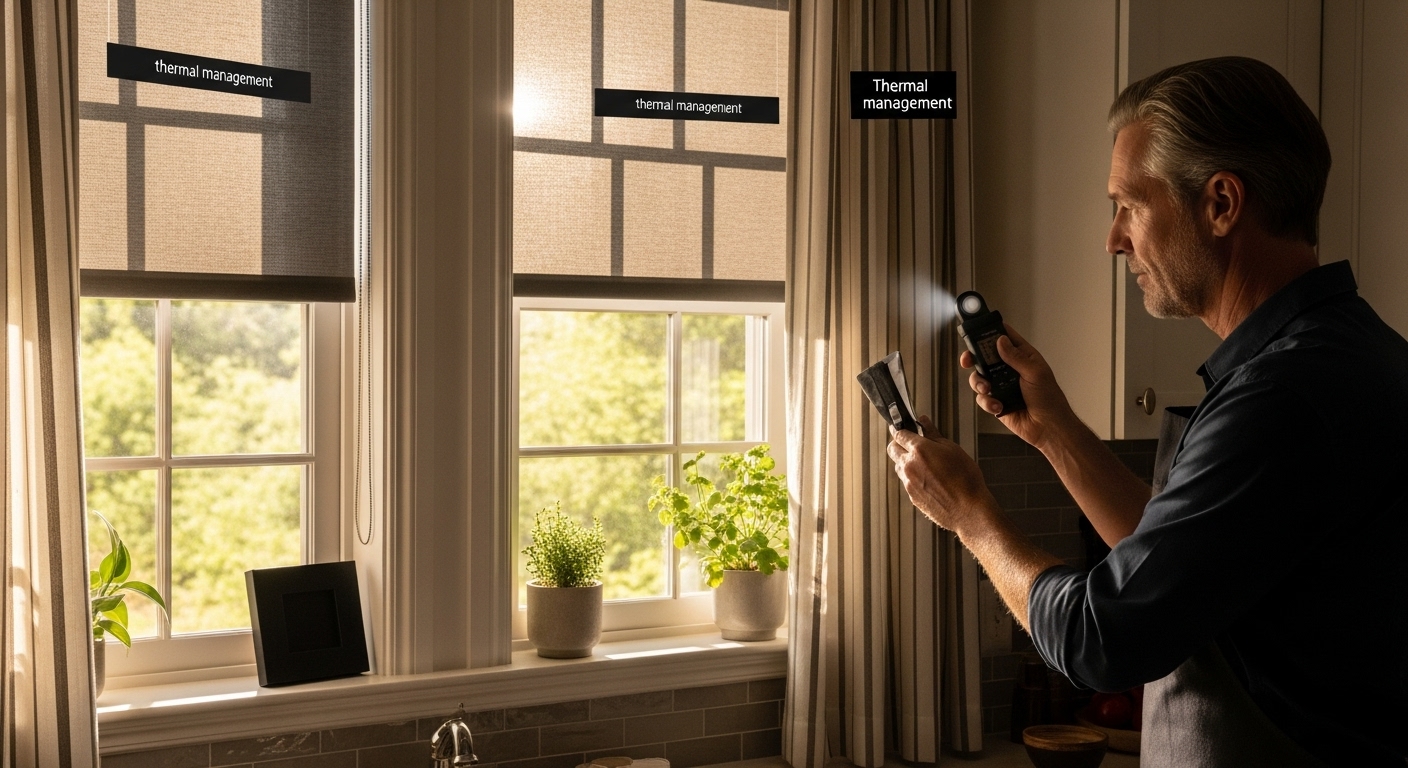
Types of Heat Blocking Window Coverings
Modern heat blocking window coverings offer diverse solutions for managing solar radiation and maintaining indoor temperature regulation. Homeowners can select from a range of technologies designed to address specific thermal management requirements and aesthetic preferences.
Passive Heat Blocking Solutions
Research from the U.S. Department of Energy highlights several passive heat blocking window treatments that effectively minimize solar heat gain. These solutions work by creating physical and optical barriers that interrupt solar radiation transmission.
Key passive heat blocking options include:
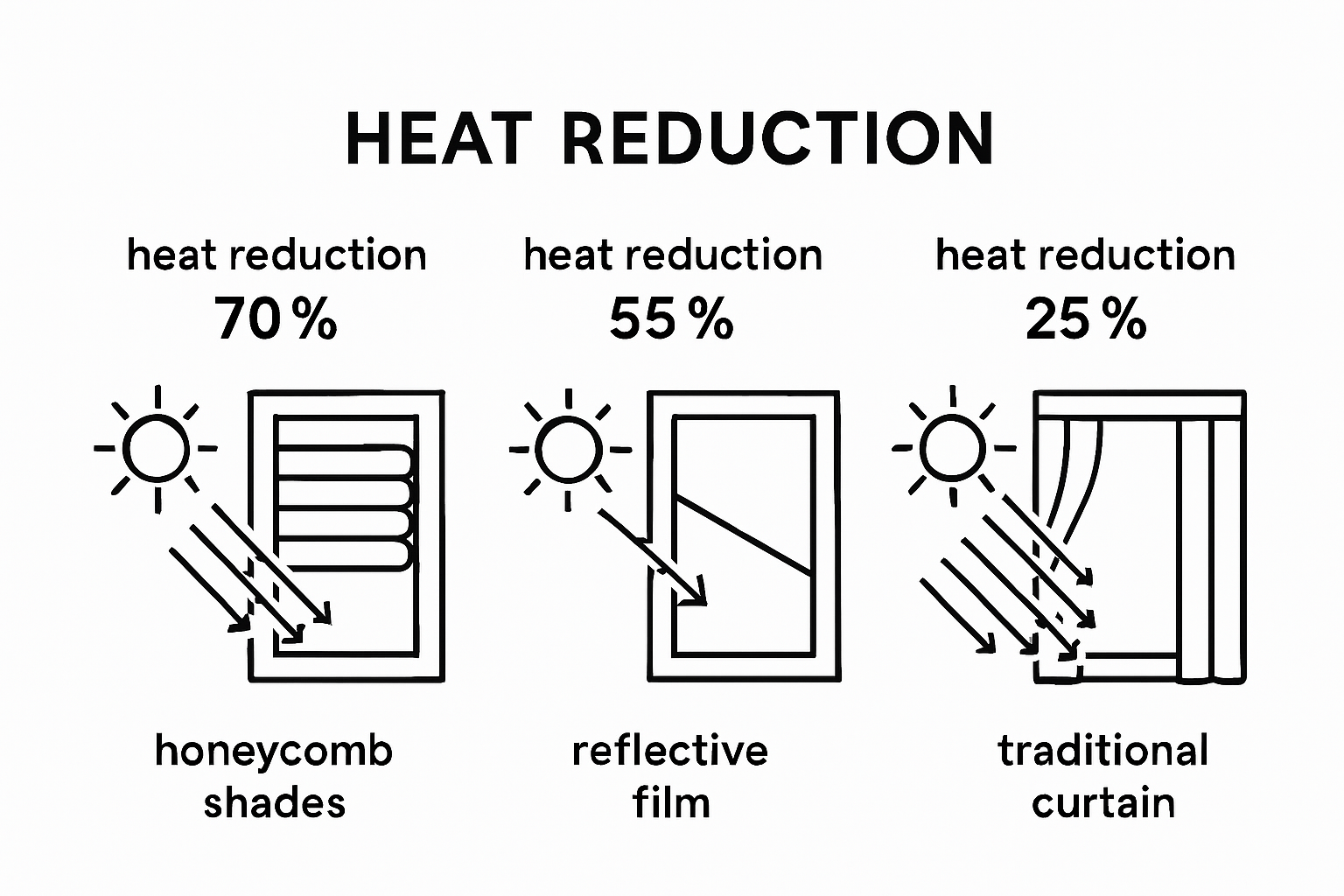
- Cellular honeycomb shades
- Reflective roller shades
- Thermal lined curtains
- Solar screening materials
- Low emissivity window films
Advanced Thermal Management Technologies
Cutting-edge heat blocking window coverings integrate sophisticated materials and design principles to provide superior thermal performance. These advanced solutions go beyond traditional window treatments, offering intelligent and responsive heat management strategies.
Innovative heat blocking technologies feature:
- Phase-changing microparticle coatings
- Smart glass with adjustable transparency
- Infrared reflective molecular layers
- Dynamic thermal transmission materials
- Programmable solar radiation filters
Explore our comprehensive window blinds and shades FAQ to understand the nuanced selection process for heat blocking window coverings. By carefully evaluating thermal performance, aesthetic requirements, and budget considerations, homeowners can implement targeted solutions that enhance indoor comfort and energy efficiency.
Real-World Benefits of Using Heat Blocking Window Treatments
Heat blocking window treatments offer far more than aesthetic enhancements, delivering substantial practical advantages that impact home comfort, energy efficiency, and long-term financial sustainability. These intelligent solutions transform residential environments through strategic thermal management.
Residential Energy Performance
Research from the Department of Energy demonstrates that strategic window treatment selection can reduce heat gain by up to 77 percent. This remarkable capability translates into significant energy conservation and reduced utility expenditures for homeowners.
Key energy performance benefits include:
- Decreased cooling system workload
- Reduced electricity consumption
- Stabilized indoor temperature ranges
- Minimized thermal energy loss
- Enhanced HVAC system efficiency
Economic and Environmental Impact
Beyond immediate thermal comfort, heat blocking window treatments generate broader economic and environmental advantages. These solutions represent a proactive approach to sustainable home management, offering measurable benefits that extend well beyond individual residential spaces.
Comprehensive impact factors encompass:
- Reduced carbon footprint
- Lower monthly utility expenses
- Extended equipment lifecycle for climate control systems
- Decreased reliance on fossil fuel energy
- Contribution to broader environmental conservation efforts
Learn more about window treatments for specific living spaces to understand how targeted thermal management can optimize different residential environments. By embracing heat blocking technologies, homeowners can simultaneously enhance personal comfort, reduce energy expenses, and contribute to meaningful environmental sustainability.
Make Your Home Cooler and More Comfortable with Advanced Heat Blocking Solutions
Tired of battling excessive heat, high energy bills, and uncomfortable spots in your home? If you are looking for an easy and effective way to regulate indoor temperatures, heat blocking window coverings are the answer. At Value Blinds, our expertly crafted window treatments, including Trending Features like cellular shades and thermal blinds, are designed to reject solar heat, help you save on cooling costs, and create a comfortable living environment all year long.
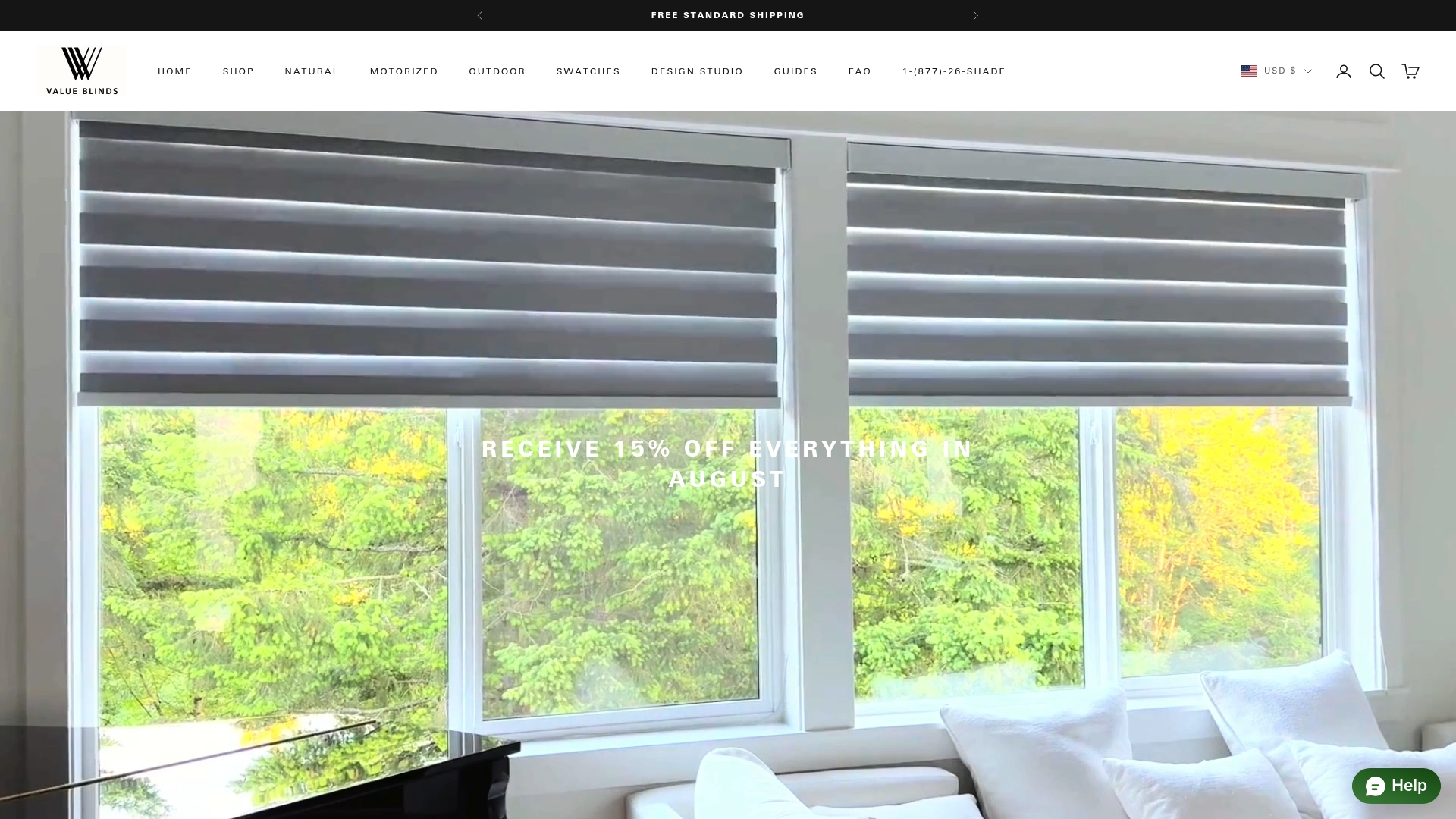
Choose the smart way to stay comfortable and efficient. Visit Value Blinds Direct for premium custom window coverings that address your comfort, style, and energy goals. Shop now to transform your space with top-rated heat blocking options, or browse our New Arrivals for the latest innovations. Start making your home cooler, more energy-efficient, and inviting today.
Frequently Asked Questions
What are heat blocking window coverings?
Heat blocking window coverings are specialized treatments designed to manage solar heat gain and enhance temperature regulation in homes. They serve as thermal barriers that protect interiors from excessive warmth and solar radiation.
How do heat blocking window coverings work?
These coverings utilize advanced materials and design principles to interrupt solar energy transmission. This includes reflective surface coatings, specialized materials with high solar reflectance, and cellular structures that create insulating air pockets.
What types of heat blocking window treatments are available?
Homeowners can choose from various options, including cellular shades, reflective roller shades, exterior solar screens, thermal drapes, and metallic-coated window films. Each type offers unique thermal management features suited to different home environments.
What are the benefits of using heat blocking window coverings?
Heat blocking window coverings offer numerous advantages, including reduced cooling costs, decreased strain on HVAC systems, improved indoor comfort, and a lower carbon footprint. They also extend the lifespan of cooling equipment and contribute to sustainable home design practices.
